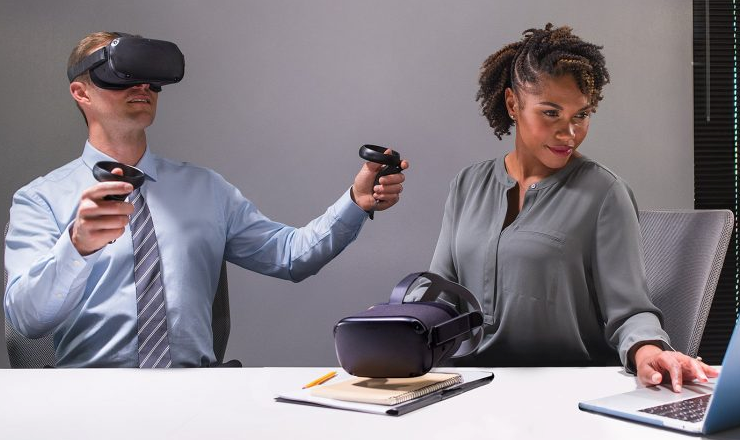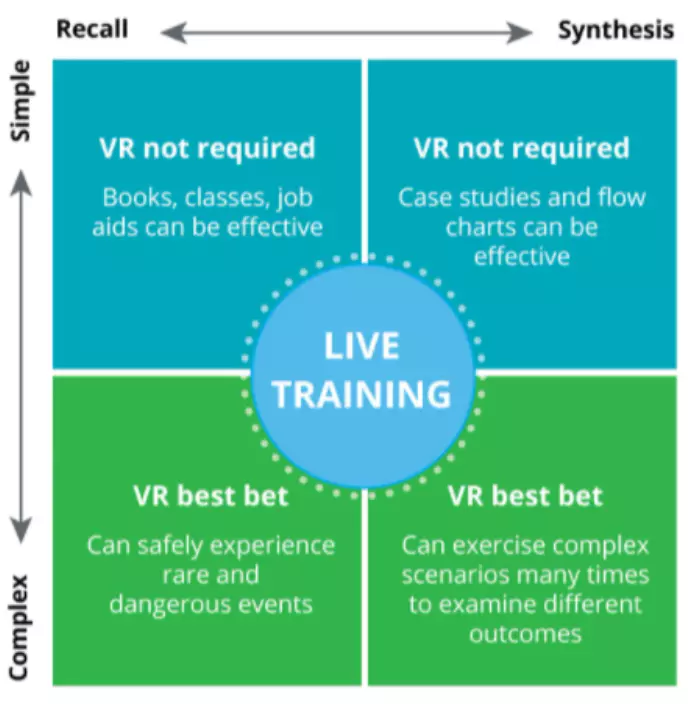Comments
- No comments found

Virtual reality (VR) is essential towards the mainstream acceptance of the metaverse.
As we’ve watched technology evolve over the last decade we’ve seen the advent of web 2 experiences turn immersive and virtual as we head towards the web 3 future and newly coined concept of the metaverse. While the concept of the metaverse is nothing new (it was initially coined by Neal Stephenson in 1992) it has now become mainstream terminology used in every possible industry and more than anything a buzzword for marketers far and wide.
In the post-pandemic world, all industries are looking to evolve some sort of metaverse strategy, and businesses like Meta have moved all-in on their strategy to incorporate technology to move the metaverse forward.
To some, the metaverse is simply putting on some kind of AR/VR/XR device and using that technology to augment or change the world around them. A sort of hybrid space where the real world and digital space collide and co-exist. Personally, I don’t feel like this encapsulates the true definition of the metaverse. To myself, someone who works with VR technology on a daily basis, the metaverse is far off.

Mark Zuckerberg’s keynote on the Metaverse
The true metaverse is much closer to the “Ready Player One” simulation where you are almost plugged into a completely immersive world with all senses activated, much similar to the “Matrix”. When you think of it in this context, we are a long way away from having the ability to plug into a virtual world. The commercialization of the metaverse however is more about NFTs, IoT, AI, and holographic avatars being used with VR/AR technology.
Over the past 6 years, I’ve watched the segment mature, especially with regard to virtual reality technology. We’ve seen brands move from proof of concept to full-scale platforms with suites of modules being used for immersive training, many times using VR technology to create digital twins of real-world processes. We are seeing more and more brands adopt some kind of innovation budget to advance towards the next iteration of the internet, coined web 3.0.
In the coming decade, we will see the advancement of technology in leaps and bounds and brands will look to innovate even further. This means brands can engage with a global audience through metaverse tech despite geographic boundaries. This also means a virtual ecosystem where enterprises can regulate transactions seamlessly using digital wallets and cryptocurrency, or the upcoming central bank digital currency (when and if it gets implemented globally). Lastly, this will have a profound impact on storytelling, where brands can use 3D technology to highlight their products and services in a unique way that wasn’t previously possible.
Here at VR Vision, our specialty has been in developing full-scale digital training simulations using virtual reality. This often times involves going on-site and taking photos and videos of real-world training processes and then turning those into 3D virtual worlds or digital twins. We’ve moved from wired headsets and base stations for tracking users to fully immersive wireless “standalone” devices in a matter of 5 years, so with the fast-paced growth and expansion, it’s hard to forecast where we will be in another 5 years.
Specifically creating digital twins of dangerous or hard-to-access job roles, there are countless benefits that organizations can take advantage of:
Eliminate Risk: Re-creating digital environments to produce digital twins allows for zero risk of harm or injury during training. This also allows us to simulate hazardous environments or dangerous environments.
Standardize/Supplement Training: We can optimize learning outcomes with full knowledge transfer in order to train more people faster, and digitally.
Increase Knowledge Retention: Training can be replayed in immersive environments as many times as needed without added cost. Allows for faster learning through exposure and the ability to record training for post-learning assessment.
Cut Costs / Increase ROI: With digital twins, we can reduce overhead, travel expenses, environmental footprint, lower insurance premiums, and overall save on space requirements by giving trainees the ability to learn from anywhere. Watch VR Vision’s CEO Roni Cerga discuss the ROI behind VR Training in a recent talk at the AWE conference 2022
VR Training quadrant for learning from Deloitte
Many times these digital twins make more sense for hard-skill training as they are re-created 3D environments using computer-generated graphics and virtual reality training simulations. We can also have as many people immersed in one environment together at the same time for faster training in multiplayer simulations.
Example of immersive multiplayer virtual reality training for electric forklift maintenance and part identification with Toyota:
On the flip side, if you are looking for soft-skill-based training, using 360 video and virtual reality can work very well for re-creating specific real-world situations. VR combined with the immersive nature of the metaverse has brought learning experiences to a whole new quantitative level. The metaverse is knocking down boundaries as a user can put on a headset and be connected with anyone irrespective of their location. And with seamless translations, the barrier of linguistics can also be negated.
Here at VR Vision, we will continue to push the barriers of what is possible with virtual reality with respect to training simulations, and it’s exciting to see adoption ramping up as more and more brands are utilizing the technology in meaningful ways.
Leave your comments
Post comment as a guest